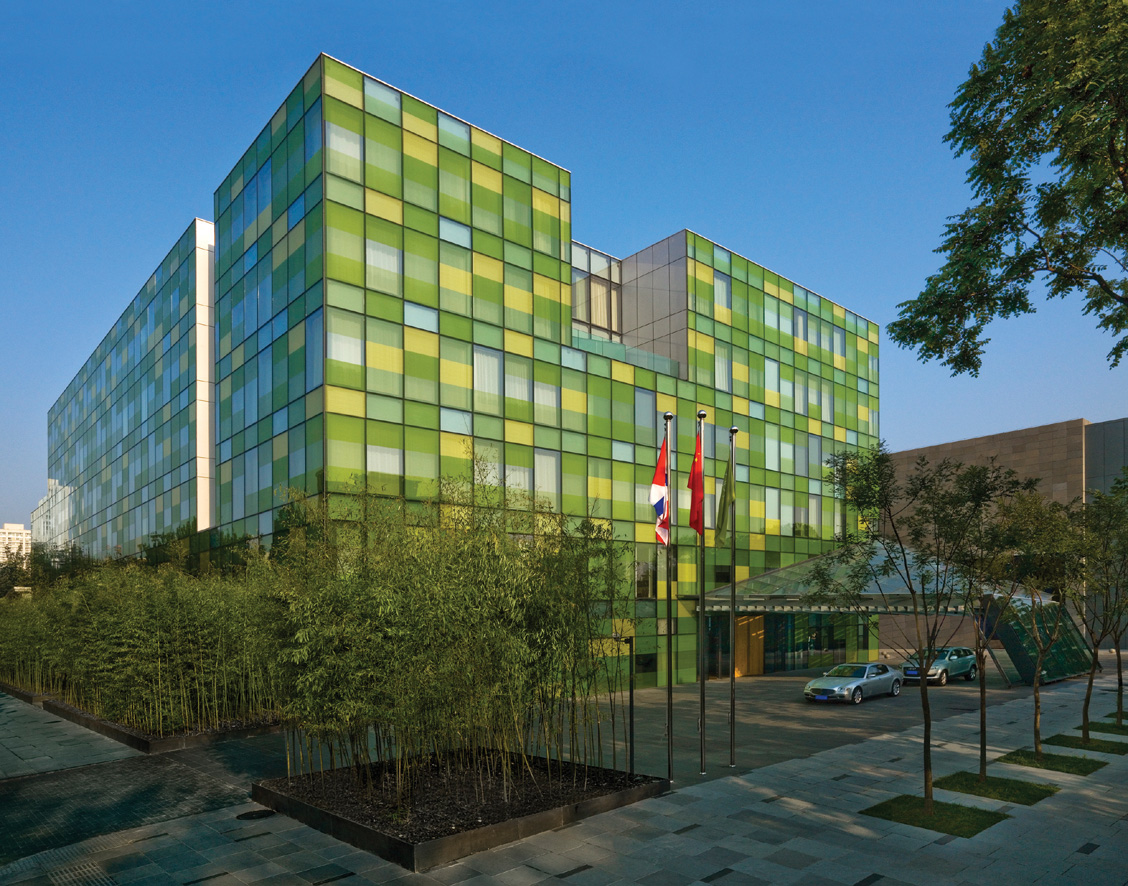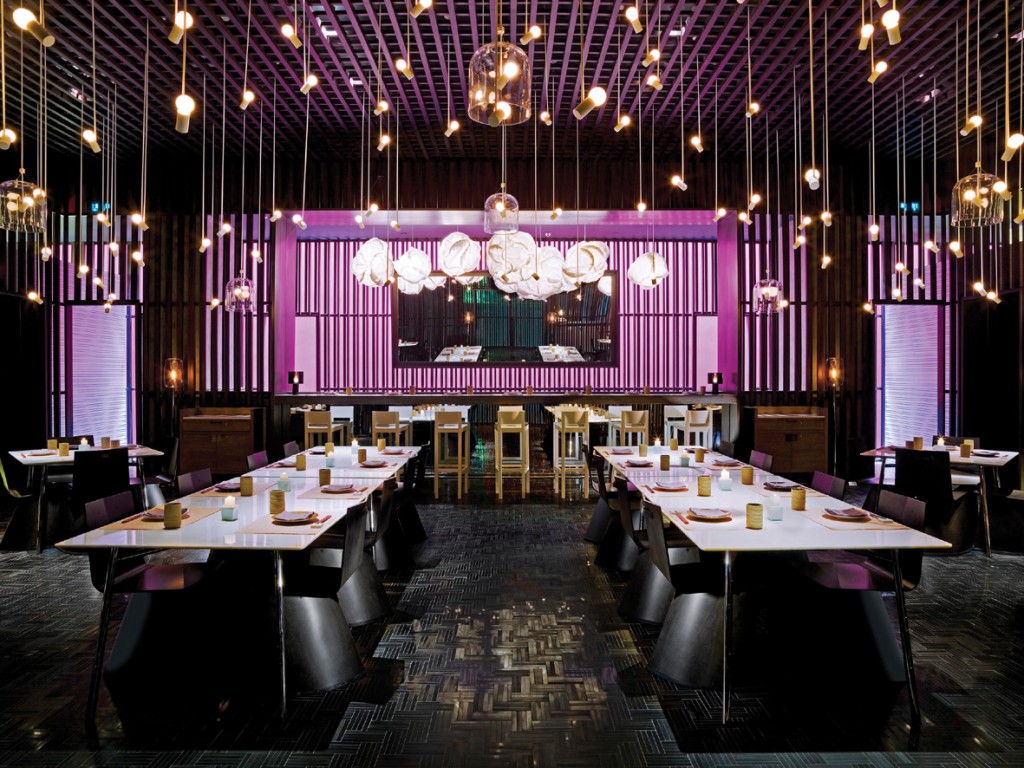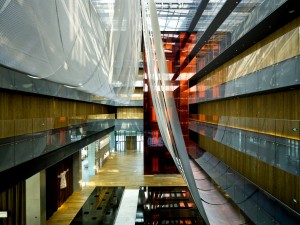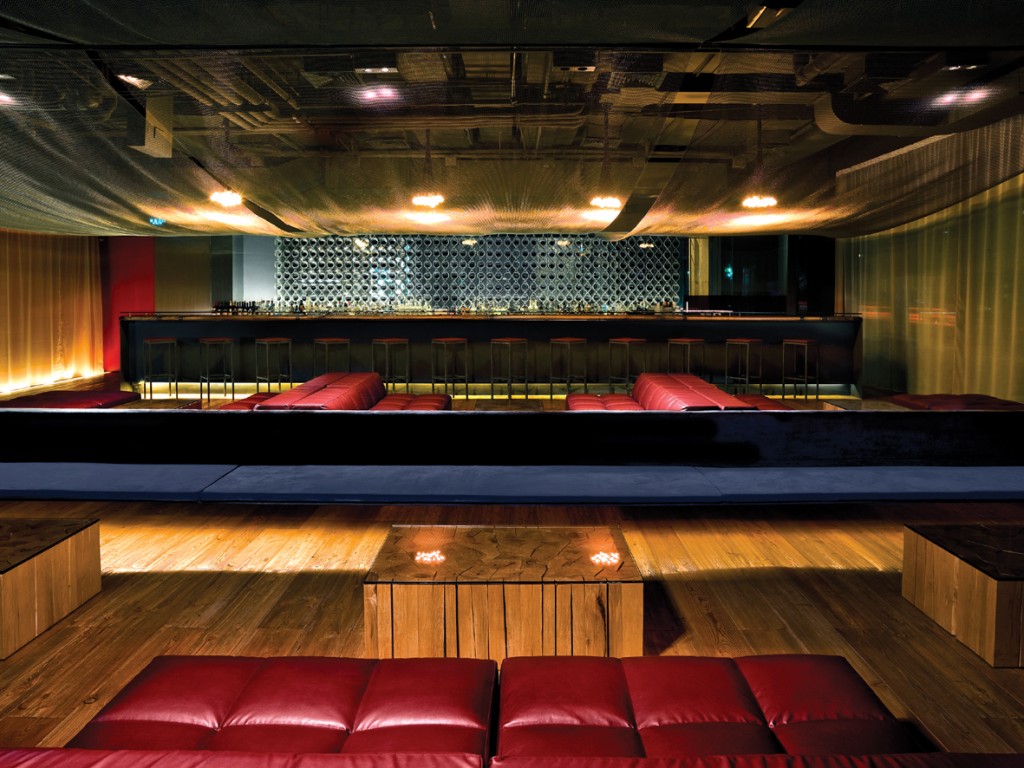With the recent announcement by Swire Hotels of the launch of their second hotel property and first in Hong Kong, The Upper House, a 117 room property at Pacific Place, PRC decided to look at the new hotel group’s first property launched just a few months ago in Beijing.
 The Opposite House, a luxurious contemporary hotel, opened in the summer of 2008 in Beijing’s vibrant Sanlituan district. Owned and managed by Swire Hotels, The Opposite House is the first of a series of unique hotel properties from the group. The hotel was designed by celebrated avantgarde architect Kengo Kuma from Japan and edgy Shanghai-based designers Lyndon Neri and Rosanna Hu.
The Opposite House, a luxurious contemporary hotel, opened in the summer of 2008 in Beijing’s vibrant Sanlituan district. Owned and managed by Swire Hotels, The Opposite House is the first of a series of unique hotel properties from the group. The hotel was designed by celebrated avantgarde architect Kengo Kuma from Japan and edgy Shanghai-based designers Lyndon Neri and Rosanna Hu.
The hotel’s exterior installed with striking emerald glass, sets out to create a “spatial experience” of light and space that completely transforms the look of the luxurious, contemporary hotel from morning to night and redefines conventional architectural boundaries to create seamless flowing spaces flooded with light. Interiors are soft, securing privacy and comfort. An overall green colour scheme, the calm of an urban forest, for which one of the most important design elements is the play of natural and artificial light. 
The Opposite House has 99 luxurious, contemporary rooms, ranging in size from 45 – 190 m2 , which are be amongst the largest in Beijing with more than half being over 70 sqm.
All guest rooms are strikingly open and simple with natural brushed oak floors, furniture and even bathtubs, with subtle touches of Chinese décor to evoke a sense of place in Beijing.
The Opposite House is a very interesting balance of private and public. It has to offer hideaways with the comfort of home, yet at the same time create vibrancy where people flow through public spaces. To create this fine, delicate balance designers soften the demarcation of each space. Among the hotel’s many striking features, a stainless-steel-clad swimming pool is designed to dramatically reflect both natural light and exciting fibre optic lighting.
 Next to the swimming pool, there are two message treatment rooms, one single and one double. A gym located in the basement overlooks the entire swimming pool. Possibly the most striking designs within The Opposite House are within the six innovative restaurants and bars with concepts conceived by Shanghai based restaurateur David Lairs.
Next to the swimming pool, there are two message treatment rooms, one single and one double. A gym located in the basement overlooks the entire swimming pool. Possibly the most striking designs within The Opposite House are within the six innovative restaurants and bars with concepts conceived by Shanghai based restaurateur David Lairs.
Hotel design was to break the large cavernous space into five distinct yet related and interactive spaces and different materials closely associated with the five elements were utilized to make them stand out from each other.
These feature forests, streaming waters, bamboo, olive grove patterns, bronze doors and metal screens, concrete bar tops and offbeat burnt Maarten Baas chandeliers in a wildy sophisticated mix of the contemporary.  The fascinating collection of modern art by Chinese artists from China, Hong Kong, Australia and the UK is in the public area around the Opposite House. The collection features artistic clothing creations in various medium, from porcelain and grass to terracotta and PVC. The artworks closely match with the theme of hotel and supporting and showcasing contemporary Chinese artists is part of Swire’s corporate vision.
The fascinating collection of modern art by Chinese artists from China, Hong Kong, Australia and the UK is in the public area around the Opposite House. The collection features artistic clothing creations in various medium, from porcelain and grass to terracotta and PVC. The artworks closely match with the theme of hotel and supporting and showcasing contemporary Chinese artists is part of Swire’s corporate vision.
Swire Hotels’ first property has garnered much positive attention for its design sensibilities and provision of luxurious amenities. As such the launch of their subsequent hotels should ensure plenty of pre-opening buzz.













